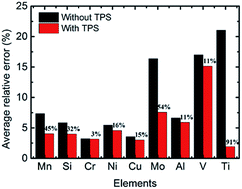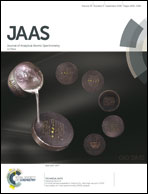Long-term repeatability improvement of quantitative LIBS using a two-point standardization method
Abstract
To improve long-term repeatability in quantitative analysis of laser-induced breakdown spectroscopy (LIBS), a two-point standardization (TPS) method was used to perform a standard procedure on the measured intensities of test samples before quantitative analysis. Based on a self-developed LIBS analyzer, the TPS method was used to measure trace elements such as Mn, Si, Cr, Ni, Cu, Ti, Al, V and Mo in low alloy steel samples. Quantitative validations with six test samples were performed every 24 hours for three days. The results demonstrated that the instrument drift was effectively corrected using the TPS method, and the average relative errors (AREs) of repeated measurements decreased by 45%, 32%, 3%, 16%, 15%, 54%, 11%, 11%, and 91% for Mn, Si, Cr, Ni, Cu, Mo, Al, V, and Ti elements, respectively. The long-term repeatability of quantitative LIBS was improved using the TPS method. The performance of the TPS method for different elements is mainly influenced by the characteristics of test samples, correction samples, experimental conditions, etc. In practice, the TPS method is a very promising way to improve the repeatability of quantitative LIBS.



 Please wait while we load your content...
Please wait while we load your content...